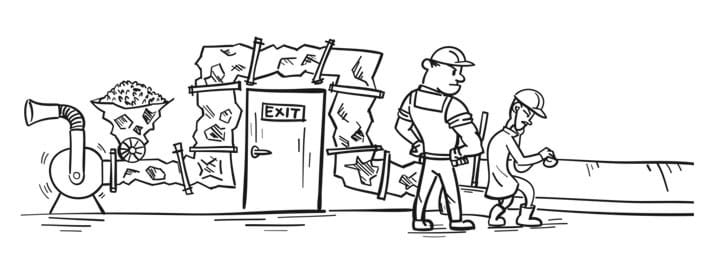Imprinted!
Grant Wellwood says soft sensors offer process engineers intriguing new ways to monitor and bolster their processes
A HATCHLING’S life ahead can be influenced by its first images of the world through a process known as imprinting, and so it was with my career in chemical engineering. Stepping onto a factory floor as a freshly-minted engineer, the very first thing I saw was an operator holding a spanner to a pipe as a makeshift stethoscope. This image was seared into my memory.
This was not something I had read or heard of during my higher education, so sensing an opportunity to impart some knowledge, I boldly intervened.
The wily operator involved – let’s call them Alex – informed me they were “listening” to the process’s pneumatic conveying lines. When the granular feed to a pneumatic conveyor is too coarse, the particles fall out of the suspension and drop to the bottom of the pipe. This act causes even more particles to drop out in a spiralling event that progressively throttles carrying capacity and increases wear. It’s an effect that’s difficult to reverse once it starts, and normally ends with the unpleasantness and frustration of having to stop the entire line and clean everything out. That’s definitely something to avoid.
Welcome to the real world!
Technically, the phenomenon is called saltation. In my textbook world, feedstocks were always uniform and the HAZOP protection here was to detect changes in pressure drop with calibrated sensors and deterministic process control code. Smugly pointing this out to Alex, I was greeted with a smirk (another green engineer to break in!) and a shopfloor lecture about being in the real world now and how this textbook approach only alerted you after the problem was already established; and hence too late (plus something about being as useful as an ashtray on a motorbike).
Alex may not have understood the physics of saltation, or even that it had a name, but they had something more nuanced, a “feel” or empathy for the process. Regarding the real world I was now in, anticipation was far more valuable an insight, and I wanted to know more. And so started my lifelong fascination with what I fondly refer to as the art of process control: process empathy. Once you accept process empathy into your engineering life, you see it and its opportunities everywhere, and true to my imprint, process control fascinates me.
At that time, deterministic process control, underpinned by ladder logic and calibrated property sensors, was king. Process empathy was considered a quirky dark art, only practised by surly operators. However, times have changed, and so must we. Through the combination of data science and modern computing systems, we can now detect and interpret patterns in abstract inputs and therefore harness the potential offered by “soft” sensors as opposed to the ones honed and calibrated to report in engineering units. You may also have heard them referred to as “proxy sensors” as they detect seemingly disparate (proxy) properties.
The evolutionary timing of this capability led by data science is perfect, as it can address the increasing complexity of today’s processing world.
Moving away from deterministic approaches can feel uncomfortable for some of us, perceived as a pivot away from science towards art. However, process empathy enables us to function as humans. The link between process physics and soft signals is firmly rooted in science, the second law of thermodynamics no less.
Through the combination of data science and modern computing systems, we can now detect and interpret patterns in abstract inputs and therefore harness the potential offered by “soft” sensors

Recent Editions
Catch up on the latest news, views and jobs from The Chemical Engineer. Below are the four latest issues. View a wider selection of the archive from within the Magazine section of this site.




